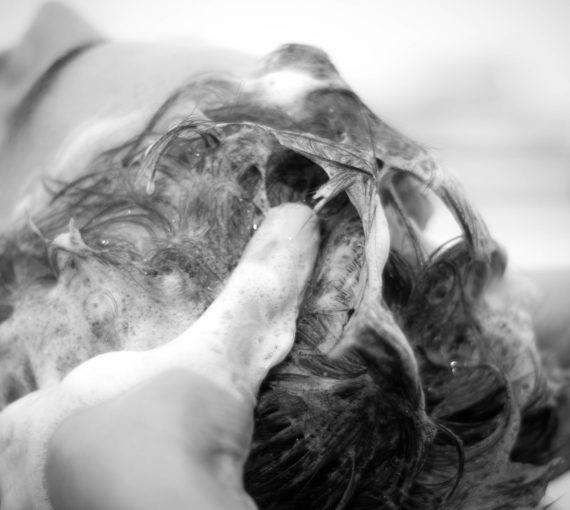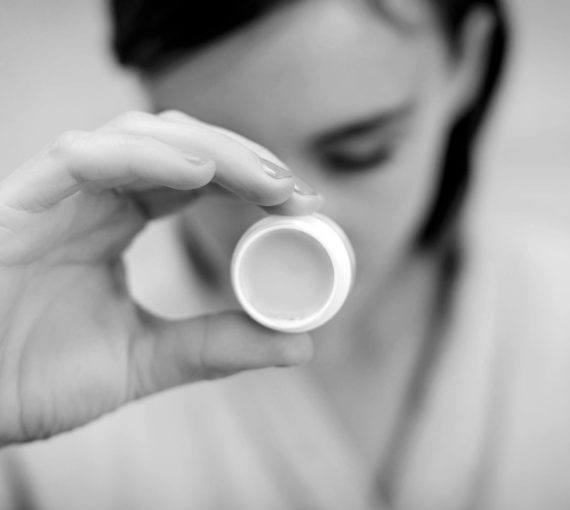Use in Cosmetics
Triclosan is used mainly in antiperspirants/deodorants, cleansers, and hand sanitizers as a preservative and an anti-bacterial agent. In addition to cosmetics, triclosan is also used as an antibacterial agent in laundry detergent, facial tissues, and antiseptics for wounds, as well as a preservative to resist bacteria, fungus, mildew and odors in other household products that are sometimes advertized as “anti-bacterial.” These products include garbage bags, toys, linens, mattresses, toilet fixtures, clothing, furniture fabric, and paints. Triclosan also has medical applications.
Health and Environmental Hazards
Triclosan can pass through skin i and is suspected of interfering with hormone function (endocrine disruption). ii U.S. Centers for Disease Control and Prevention scientists detected triclosan in the urine of nearly 75 per cent of those tested (2,517 people ages six years and older). iii The European Union classifies triclosan as irritating to the skin and eyes, and as very toxic to aquatic organisms, noting that it may cause long-term adverse effects in the aquatic environment. ivEnvironment Canada likewise categorized triclosan as potentially toxic to aquatic organisms, bioaccumulative, and persistent. In other words, it doesn’t easily degrade and can build up in the environment after it has been rinsed down the shower drain. In the environment, triclosan also reacts to form dioxins, which bioaccumulate and are toxic. v
The extensive use of triclosan in consumer products may contribute to antibiotic-resistant bacteria. vi The Canadian Medical Association has called for a ban on antibacterial consumer products, such as those containing triclosan. vii
Regulatory Status
Health Canada’s Cosmetic Ingredient Hotlist limits the concentration of triclosan to 0.03 per cent in mouthwashes and 0.3 per cent in other cosmetics. The problem is that triclosan is used in so many products that the small amounts found in each product add up — particularly since the chemical does not readily degrade. Moreover, some anti-bacterial hand sanitizers containing triclosan may not classify as “cosmetics” as per the Food and Drug Act. Products classified as “drugs” on the basis of a therapeutic claim or function are not subject to the Cosmetic Regulations or the Hotlist restriction.
Environment Canada has flagged triclosan for future assessment under the government’s Chemicals Management Plan.
i Calafat, A. “Urinary Concentrations of Triclosan in the U.S. Population: 2003-2004.” _Environ Health Perspect _116, 3(Mar 2008):303-307.
ii Gee, RH et al. “Oestrogenic and androgenic activity of triclosan in breast cancer cells.” Appl Toxicol.28, 1 (Jan 2008):78-91.
iii Calafat, A. “Urinary Concentrations of Triclosan in the U.S. Population: 2003-2004.” Environ Health Perspect 116, 3(Mar 2008):303-307 https://ehp03.niehs.nih.gov/article/fetchArticle.action?articleURI=info:doi/10.1289/ehp.10768
iv European Commission. Regulation (EC) 1272/2008 , Annex VI, Table 3.2. Sep 2009. https://eur-lex.europa.eu/LexUriServ/LexUriServ.do?uri=OJ:L:2008:353:0001:1355:en:PDF
v “Environmental News.” _Environmental Science & Technology _36, 13 (June 1, 2002): 230A. https://pubs.acs.org/doi/pdf/10.1021/es022325g?cookieSet=1
vi Canosa, P. et al. “Aquatic degradation of triclosan and formation of toxic chlorophenols in presence of low concentrations of free chlorine.” Analytical and Bioanalytical Chemistry 383, 7-8 (Dec 2005): 119-1126.
vii Yang, J. “Experts concerned about dangers of antibacterial products.” The Globe and Mail. Aug 21, 2009. https://www.theglobeandmail.com/life/health/experts-concerned-about-dangers-of-antibacterial-products/article1259471/




